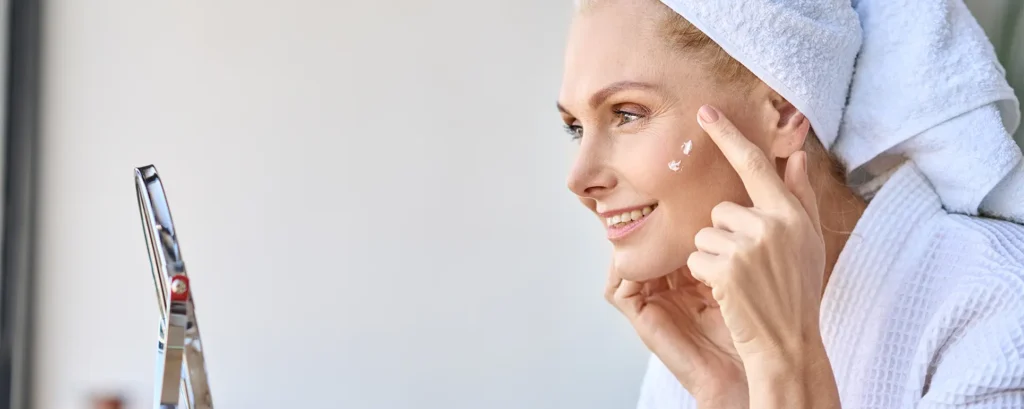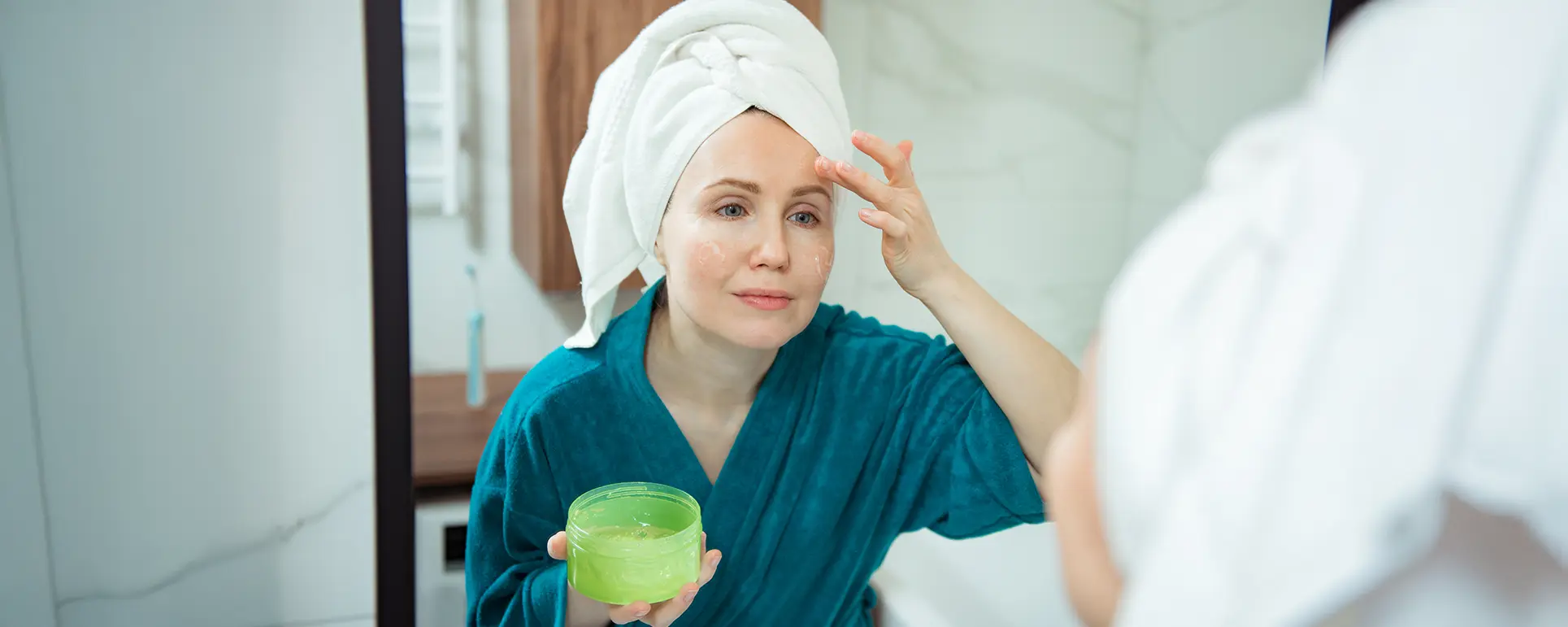Dull, tired-looking skin is a concern that many people face at some point in their lives. It can be frustrating to look in the mirror and see a complexion that appears lacklustre, uneven, or fatigued especially when you feel energetic on the inside. This skin concern often stems from multiple factors, such as dehydration, excessive sun exposure, pigmentation issues, lifestyle habits, or simply the natural effects of ageing. Over time, these elements can strip the skin of its healthy glow, leaving it looking flat and less radiant.
While a consistent skincare routine cleansing, moisturising, sun protection, and gentle exfoliation is crucial for maintaining skin health, at-home care sometimes isn’t enough to restore a truly vibrant and luminous appearance. In such cases, professional intervention from a dermatologist can make a significant difference. Dermatologists not only identify the root causes of dullness but also create personalised treatment plans to rejuvenate and brighten the skin from within.
A dermatologist’s approach typically starts with a thorough skin assessment, examining factors such as hydration levels, pigmentation patterns, collagen density, and skin texture. This evaluation helps determine whether the dullness is caused by surface build-up of dead skin cells, uneven melanin distribution, reduced blood circulation, environmental damage, or underlying medical conditions. Lifestyle factors, including diet, stress, and sleep quality, are also considered, as they play a surprisingly large role in skin vitality.
Once the cause is identified, dermatologists have a wide range of treatments at their disposal to improve skin tone and radiance. Depending on the individual’s needs, these may include chemical peels to resurface and smooth the skin, microdermabrasion to remove dead cells, laser therapies to even out pigmentation and boost collagen production, and hydrating facials or mesotherapy to infuse the skin with moisture and nutrients. For more advanced rejuvenation, options such as microneedling with platelet-rich plasma (PRP) or fractional laser resurfacing can stimulate the skin’s natural repair processes, resulting in a fresher, more youthful glow.
Ultimately, addressing tired, dull skin is not just about applying brightening creams it’s about understanding the deeper factors that contribute to a lack of radiance and tackling them with targeted, evidence-based treatments. With the right professional guidance and a tailored skincare plan, it is possible to restore luminosity, smoothness, and vitality to your complexion, helping your skin reflect the healthy energy you feel inside.
1. Understanding the Causes of Dull Skin

A glowing, radiant complexion is often seen as a sign of health and vitality, but many people struggle with skin that appears flat, lifeless, or fatigued. Before any treatment plan can be effective, it’s crucial to understand why the skin has lost its brightness. A dermatologist’s first step is always to identify the underlying causes, as these will determine which professional treatments and skincare strategies will deliver the best results.
Common Causes of Dull Skin
1. Dehydration
When the skin is lacking adequate moisture, it tends to look rough, flaky, and lacking in vitality. Dehydration can be caused by environmental factors such as exposure to dry air, harsh winds, or prolonged time in air-conditioned rooms. Internal factors also play a role insufficient water intake, excessive caffeine or alcohol consumption, and certain medications can all contribute to moisture loss. Without enough hydration, the skin barrier becomes compromised, making it harder for the skin to reflect light and appear luminous.
2. Pigmentation Issues
Uneven pigmentation is another major contributor to a dull-looking complexion. Conditions like hyperpigmentation, sunspots, melasma, or post-inflammatory marks left behind after acne can disrupt the skin’s even tone. These darker patches absorb light differently than the surrounding skin, creating an overall shadowed and tired look. Pigmentation can be triggered by sun exposure, hormonal changes, inflammation, or even genetic predisposition.
3. Ageing
The natural ageing process inevitably affects skin radiance. As the years pass, the skin gradually loses collagen and elastin two structural proteins that keep it plump, firm, and smooth. At the same time, cell turnover slows down, meaning dead skin cells linger on the surface longer, creating a dull, uneven texture. Fine lines and sagging further reduce the skin’s ability to reflect light evenly, making it look tired even when you’re well-rested.
4. Poor Circulation
Healthy blood flow delivers oxygen and nutrients to skin cells, supporting repair and renewal. When circulation is sluggish whether due to a sedentary lifestyle, lack of exercise, chronic stress, or poor sleep the skin may appear pale, ashy, or tired. Reduced circulation also means toxins aren’t flushed away as efficiently, which can make the skin look congested and less vibrant over time.
Dermatologist’s Insight:
To pinpoint the root cause of dullness, a dermatologist will thoroughly examine your skin’s texture, tone, and hydration levels. They may also review your medical history, current skincare routine, and lifestyle habits, including diet, stress levels, and sleep quality. This holistic approach ensures that the treatment plan targets not only the visible symptoms but also the underlying triggers maximising the chances of restoring your skin’s healthy, youthful glow.
2. Dermatologist-Recommended Treatments for Dull Skin

Once a dermatologist has identified the root cause of your skin’s dullness, they can create a targeted treatment plan to bring back that fresh, healthy glow. Often, the most effective approach combines professional in-clinic procedures with a customised at-home skincare routine. Professional treatments work on a deeper level than over-the-counter products, targeting the skin’s structure and stimulating natural repair processes for longer-lasting results.
Popular Treatments for Reviving Skin Radiance
1. Chemical Peels
Chemical peels are a tried-and-true method for revealing brighter, smoother skin. This treatment involves applying a specially formulated chemical solution to gently exfoliate the outer layer of dead skin cells. As these dull, damaged cells are shed, fresh new skin emerges, giving your complexion an instant boost in clarity and brightness. Depending on your skin’s needs, peels can range from superficial to deeper formulations, addressing not only dullness but also pigmentation, uneven tone, and fine lines. Over time, chemical peels can improve skin texture, refine pores, and encourage more even light reflection making your skin appear naturally more radiant.
2. Hydrafacials
Hydrafacials are advanced, multi-step facials that cleanse, exfoliate, extract impurities, and deeply hydrate the skin in a single session. Unlike traditional facials, Hydrafacials use a gentle vacuum-based technology to remove debris from pores while simultaneously infusing the skin with nutrient-rich serums tailored to your skin type. This dual-action process restores essential moisture, smooths rough texture, and enhances the skin’s natural luminosity. Many patients notice an immediate glow after treatment, making it a popular choice before special events or as part of a monthly skin maintenance routine.
3. Polynucleotides (PN)
Polynucleotides are a newer, innovative option for skin revitalisation. Derived from purified DNA fragments, these bio-stimulating treatments work at a cellular level to repair damaged tissue, boost collagen synthesis, and enhance skin hydration. PN injections are particularly effective for addressing early signs of ageing, such as fine lines, loss of elasticity, and rough texture. By improving the skin’s structure from within, polynucleotides help restore bounce, smoothness, and a healthy-looking glow. They are especially beneficial for individuals experiencing skin thinning or dehydration caused by ageing or environmental stress.
4. Microneedling
Microneedling, also known as collagen induction therapy, involves the use of ultra-fine needles to create micro-injuries in the skin’s surface. While the procedure sounds intimidating, it is minimally invasive and stimulates the skin’s natural healing response. This encourages the production of new collagen and elastin two proteins essential for firmness and radiance. Over a series of treatments, microneedling can reduce pigmentation, soften fine lines, refine pores, and dramatically improve skin texture. The result is skin that not only looks fresher and smoother but also has a youthful, healthy glow.
Dermatologist’s Insight:
In many cases, dermatologists recommend combining treatments for maximum effect. For example, a patient may start with a chemical peel to remove surface dullness, follow it up with microneedling to boost collagen, and then incorporate polynucleotides to improve hydration and elasticity. This layered approach addresses multiple causes of dull skin at once, leading to more noticeable and longer-lasting results.
3. Topical Treatments and Skincare Tips

Alongside in-clinic procedures, dermatologists often recommend targeted topical treatments to maintain results and enhance the skin’s natural radiance. These products work gradually over time to improve skin texture, even out tone, and keep the complexion looking fresh and healthy. When used consistently and correctly, they can help prolong the effects of professional treatments and protect the skin from further damage.
Topical Treatments to Consider
1. Vitamin C
A potent antioxidant, vitamin C helps brighten dull skin by reducing pigmentation and promoting a more even skin tone. It also protects against damage from environmental stressors such as pollution and UV rays, which can contribute to premature ageing. Regular use can result in a healthier-looking complexion with a natural, lit-from-within glow.
2. Retinoids
Derived from vitamin A, retinoids encourage faster cell turnover, helping to shed dead skin cells and reveal newer, healthier skin underneath. They also boost collagen production, which softens fine lines and gives the skin a smoother, more youthful appearance. Over time, retinoids can noticeably improve both radiance and skin firmness.
3. Hyaluronic Acid
Known for its impressive hydrating abilities, hyaluronic acid draws moisture into the skin, making it look plump and dewy. Well-hydrated skin reflects light better, instantly improving radiance. It’s suitable for almost all skin types and can be layered easily with other active ingredients for added benefits.
4. Exfoliating Acids
Ingredients like alpha hydroxy acids (AHAs) and beta hydroxy acids (BHAs) gently dissolve dead skin cells, unclog pores, and smooth uneven texture. Regular use can significantly enhance brightness and clarity. They also help other skincare products penetrate more effectively, boosting overall results.
Tip:
Before adding new products to your routine, it’s best to consult a dermatologist. They can guide you toward formulas and concentrations that suit your skin type and address your specific concerns, helping you avoid irritation or ineffective results. A professional’s advice ensures you build a skincare regimen that delivers visible, lasting improvements without unnecessary risk.
4. Maintaining Skin Health at Home
Achieving radiant, healthy skin is not just about what happens in the dermatologist’s office it’s about what you do every single day. While professional treatments can deliver visible and often immediate results, your long-term skin health depends on consistent care at home. Good habits not only preserve the glow you’ve worked hard to achieve but also protect your skin from future damage, ensuring it stays fresh and vibrant for years to come.
At-Home Skincare Tips
1. Hydrate
Hydration is one of the simplest yet most powerful ways to keep your skin looking its best. When the body is well-hydrated, skin cells function optimally, retaining moisture and elasticity. Without enough water, skin can appear dull, rough, and tired. Dermatologists recommend aiming for at least 2–3 litres of water per day, adjusting for climate and activity level. Hydration doesn’t only come from drinking water incorporate water-rich foods like cucumbers, tomatoes, oranges, and watermelon to keep your skin glowing from the inside out. Herbal teas and coconut water are also great additions for variety.
2. Use Sunscreen Daily
If there is one product dermatologists universally agree on, it’s sunscreen. Ultraviolet (UV) radiation from the sun is a leading cause of premature skin ageing, pigmentation, and uneven tone. Daily use of a broad-spectrum sunscreen with SPF 30 or higher creates a protective barrier against both UVA (ageing) and UVB (burning) rays. Even on cloudy days or when indoors near windows, UV exposure can still occur, so make sunscreen a non-negotiable part of your morning routine. For oily or acne-prone skin, look for lightweight, non-comedogenic formulas, while those with dry skin may prefer hydrating or cream-based sunscreens.
3. Get Enough Sleep
Sleep is often referred to as “nature’s beauty treatment,” and for good reason. During deep sleep, your skin enters a repair mode collagen production increases, cell turnover accelerates, and moisture balance is restored. In contrast, lack of sleep can lead to pale skin, dark circles, puffiness, and even a weakened skin barrier. Aim for 7–9 hours of uninterrupted sleep each night and maintain a consistent sleep schedule. Creating a bedtime ritual such as avoiding screens an hour before bed, using calming essential oils, or practising relaxation techniques can help improve sleep quality, which in turn reflects on your skin.
4. Eat a Balanced, Skin-Friendly Diet
Your skin is a reflection of what you feed your body. A nutrient-rich diet supplies the vitamins, minerals, and antioxidants your skin needs to stay healthy. Vitamin C from citrus fruits supports collagen production, omega-3 fatty acids from fatty fish like salmon help maintain skin elasticity, and antioxidants from berries protect against free radical damage that can cause dullness and premature ageing. Don’t forget leafy greens like spinach and kale, which are packed with skin-strengthening nutrients. Limiting refined sugars and processed foods can also reduce inflammation and help prevent skin congestion or breakouts.
5. Support Your Skin Barrier
Beyond hydration and sun protection, it’s important to care for your skin barrier the outermost layer that keeps moisture in and irritants out. Using a gentle cleanser, avoiding overly harsh exfoliation, and incorporating barrier-repairing ingredients like ceramides or niacinamide can keep this protective layer healthy. A strong skin barrier is key to maintaining long-term radiance and resilience.
Final Thought: Bringing Back Your Skin’s Natural Glow
If your skin always looks tired or dull, professional treatments from a dermatologist can provide the help you need to restore vibrancy. From chemical peels and hydrafacials to polynucleotides and microneedling, there are various effective treatments available to address dehydration, pigmentation issues, and signs of ageing.
If you’re concerned about your skin’s appearance and would like professional guidance, you can get in touch with us to book a consultation with one of our expert dermatologists in London. We can provide personalised recommendations to help you achieve healthier, more radiant skin.
References:
- Lee, K.W.A., Chan, K.W.L., Lee, A., Lee, C.H., Wan, J., Wong, S. & Yi, K-H. (2024). Polynucleotides in Aesthetic Medicine: A Review of Current Practices and Perceived Effectiveness. International Journal of Molecular Sciences, 25(15), 8224. https://pmc.ncbi.nlm.nih.gov/articles/PMC11311621/
- S.L., et al. (2024). The Effectiveness of Polynucleotides in Esthetic Medicine: A Systematic Review. Journal of Cosmetic Dermatology. https://pubmed.ncbi.nlm.nih.gov/39645667/
- ark, K.Y., Seok, J., Rho, N.K., Kim, B.J. & Kim, M.N. (2016). Long-chain polynucleotide filler for skin rejuvenation: efficacy and complications in five patients. Dermatologic Therapy, 29(1), pp.37–40. https://pubmed.ncbi.nlm.nih.gov/26814448/
- Lee, D., Kim, M.J., Park, H.J., et al. (2023). Current practices and perceived effectiveness of polynucleotides for treatment of facial erythema by cosmetic physicians. Skin Research and Technology, 29(9), e13466. https://pmc.ncbi.nlm.nih.gov/articles/PMC11388635/
Titcomb, L. (2025). A literature review on polynucleotide efficacy on skin rejuvenation, and review of the regulatory status and guidelines around polynucleotides. Journal of Aesthetic Nursing. https://www.magonlinelibrary.com/doi/abs/10.12968/joan.2025.0009
